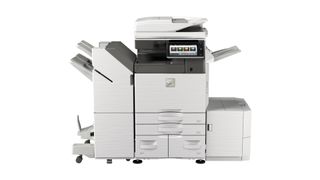
“This certification signifies Canon’s leadership and commitment to balancing cost-effective service solutions with best-in-class service performance,” says Bruce Belfiore, CEO, BenchmarkPortal. “To maintain superior performance for ten years straight is, indeed, an exceptional accomplishment.”
To evaluate a call center, BenchmarkPortal researchers audit and validate companies against a balanced scorecard of metrics for efficiency and effectiveness. The balanced scorecard includes key performance indicators, customer satisfaction ratings, cost, and quality-related evaluations.
“We are honored that BenchmarkPortal recognized us for the tenth year in a row as a leader in providing an outstanding customer service and support experience,” says Leroy Farrell, vice president and general manager, Business Imaging Solutions Group, Engineering Services and Solutions, Canon U.S.A., Inc. “We built our Customer Solutions Center more than a year ago to evolve with the industry’s changing needs and seamlessly provide innovative, end-to-end service solutions. To us, this certification signifies that the center is doing its job, and doing it well for our channel partners and customers.”
The Customer Solutions Center fosters collaboration, with technical support, engineering, and development teams working together within one location to employ cutting-edge technologies that deliver outstanding service and support solutions to Canon channel partners, and in turn customers, across the enterprise, production, large format, image capture, and desktop imaging product lines.
About Center of Excellence Certification
Contact centers and their managers who wish to implement best practices and attain world-class performance in their industry have a unique opportunity to certify their contact centers. BenchmarkPortal’s rigorous certification process has the advantage of referencing all performance goals to their best practice database of thousands of contact centers. Thus, contact centers will be held to performance levels that will improve their competitive position, not just force them to adhere to an arbitrary standard. Discover what the steps to certification are and how they will improve your center’s performance.
https://www.benchmarkportal.com/cont…certification/.
About BenchmarkPortal
Founded in 1995, BenchmarkPortal is a global leader in the contact center industry, providing benchmarking, certification, training, consulting, research and industry reports. The BenchmarkPortal team of professionals has gained international recognition for its innovative approach to best practices for the contact center indus*try. BenchmarkPortal hosts the world’s largest database of contact center metrics, which is constantly being refreshed with new data. BenchmarkPortal’s mission is to provide contact center managers with the tools and information that will help them optimize their efficiency and effectiveness in their customer communications.
For more information on BenchmarkPortal please call 1-800-214-8929 or visitwww.BenchmarkPortal.com.
About Canon U.S.A., Inc.
Canon U.S.A., Inc., is a leading provider of consumer, business-to-business, and industrial digital imaging solutions to the United States and to Latin America and the Caribbean markets. With approximately $36 billion in global revenue, its parent company, Canon Inc. (NYSE:CAJ), ranks third overall in U.S. patents granted in 2017† and is one of Fortune Magazine’s World’s Most Admired Companies in 2018. Canon U.S.A. is committed to the highest level of customer satisfaction and loyalty, providing 100 percent U.S.-based service and support for all of the products it distributes in the United States. Canon U.S.A. is dedicated to its Kyosei philosophy of social and environmental responsibility. In 2014, the Canon Americas Headquarters secured LEED® Gold certification, a recognition for the design, construction, operations and maintenance of high-performance green buildings. To keep apprised of the latest news from Canon U.S.A., sign up for the Company’s RSS news feed by visiting www.usa.canon.com/rss and follow us on Twitter @CanonUSA. For media inquiries, please contact pr@cusa.canon.com.
†Based on weekly patent counts issued by United States Patent and Trademark Office.
















